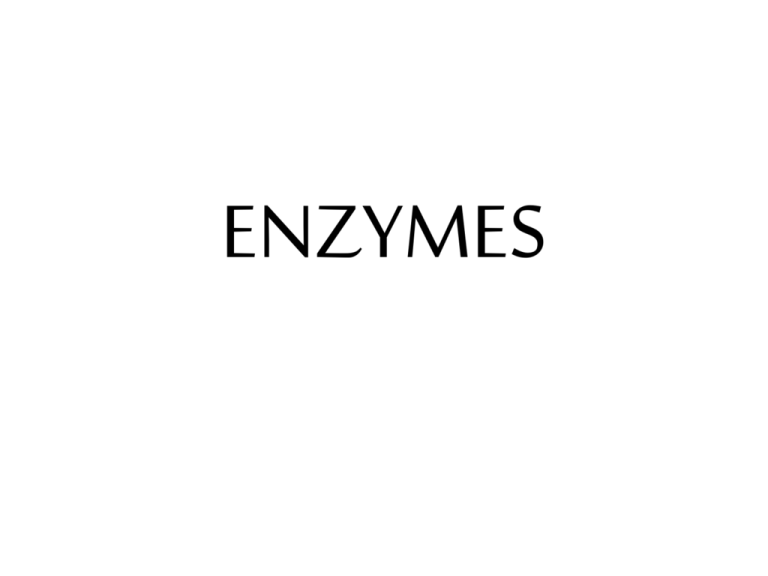Enzymes notes
advertisement

ENZYMES • Perform chemical reactions in your body • What type of food nutrient are they? – PROTEINS • Have to be folded up in a particular way in order to work • Name is based on the substrate it works on— always ends in “-ase” – Lactase works on: • Lactose – sucrase works on: • Sucrose – Protease works on • proteins ACTIVATION ENERGY • Energy “hump” which molecules have to get over in order to react This reaction is exothermic because it releases energy The products have less energy than the reactants Example: paper will not burn by itself – it needs an input of energy to get over the energy hump, but once it starts it releases energy More about activation energy… This reaction is endothermic because it absorbs energy The products have more energy than the reactants Example: plants make their own sugars out of carbon dioxide and water This is called PHOTOSYNTHESIS The sugar (glucose) has more energy than the CO2 and H2O Check your Understanding 1. Enzymes are what kind of food nutrient? 2. What is the difference between and endothermic and an exothermic reaction? Give an example of each 3. What does an endothermic reaction look like on a graph? An exothermic reaction? CATALYSTS • Help reactions proceed faster than normal – Lower the activation energy required for the reaction – Reactions can take place at a lower temperature than normal • Enzymes are the catalysts in your body • Catalysts only help the reaction proceed, but are not part of the final product—they can be re-used How enzymes work • They bind to the substrate they are acting on – The substrate has an active site which attracts the enzyme – “Lock-and-key: model: active site and enzyme have to fit exactly – “Induced fit” model: the enzyme changes shape slightly as it binds to the substrate Induced-fit model of enzyme activity Cofactors • Some enzymes require a cofactor or a coenzyme in order to work • In your body, the cofactors are vitamins and minerals How enzymes are denatured • Enzymes are very sensitive to changes in pH and temperature • They cause the enzyme to denature—the enzyme unfolds slightly so its 3-D shape won’t fit the substrate anymore Check Your Understanding 1. Explain how enzymes work as catalysts in your body 2. Explain the difference between the lockand-key model and the induced-fit model of enzyme activity 3. What are the cofactors in your body? 4. What does denature mean? What would cause an enzyme to become denatured?



